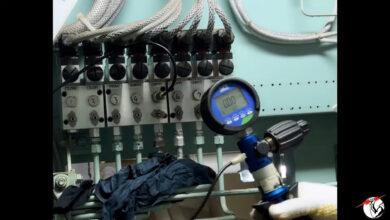Why Your Engine Smokes—and What Each Color Really Means 🚩

How Exhaust Gas Emissions Work: A Beginner’s Guide to Polluting Efficiently 🚗💨
Ah, exhaust gases. The unsung heroes of combustion engines, gracefully spewing toxic delights into the atmosphere. Whether it’s your bike coughing up black smoke or a colossal ship belching out an entire fog bank, understanding emissions isn’t just important—it’s mandatory. Especially if you like avoiding fines or pretending you care about global warming. 🌍
So, buckle up, junior engineers, because today we’re diving into the wild world of SOx, NOx, COx, and other fun terms that sound like rejected band names. Let’s get to it!
Safety First (Because You Don’t Want to Be a Human Chimney)
Before you start casually examining exhaust fumes, here are a few quick warnings:
- Don’t sniff the smoke. This isn’t an air freshener, my friend—it’s poison. 🚫💀
- Wear protective gear. Particles from emissions love hanging out in your lungs.
- Remember: Standing near running engines = Dumb Idea™. Especially on a ship, where things get extra toasty.
Step-by-Step: How Exhaust Gas Gets All Gassy
Step 1: Combustion Basics—Fire + Air = Pollution
Here’s how this all kicks off:
- Engines need oxygen (21% of air) and fuel (mostly hydrocarbons with some unwanted sulfur).
- A little lube oil sneaks in too, just to keep things spicy.
- Add high temperature, and boom, combustion happens!
What do we get?
- 40% of that energy makes your engine do something useful, like moving your car or propeller.
- The other 60%? Lost to heat and exhaust gases—our main characters for today.
Step 2: Meet the Emission Dream Team 🏆
Here’s what’s in those lovely exhaust fumes and why each one deserves a villain origin story:
- SOx (Sulfur Oxides)
- Why it exists: Sulfur in fuel burns up and forms SO₂ (Sulfur Dioxide) and SO₃ (Sulfur Trioxide).
- Why you should care: These gases combine with water vapor to form sulfuric acid, a.k.a. the stuff responsible for acid rain. 🌧️
- The Fix: Lower the sulfur content in your fuel. IMO regulations dropped the max sulfur percentage from 4.5% (wild times) to 0.5% in 2020. In fancy Emission Control Areas (ECA), it’s down to 0.1%—because Europe has no chill when it comes to clean air.
- NOx (Nitrogen Oxides)
- Why it exists: When engine temperatures hit a sizzling 2700°F, nitrogen from the air breaks down into NO₂ and N₂O (fun names, terrible gases).
- Why you should care: NOx causes smog. If you remember Delhi turning into a gas chamber, NOx was one of the culprits. Oh, and it also forms nitric acid, another acid rain MVP.
- The Fix: Keep engine temperatures down with clever design changes.
- CO₂ (Carbon Dioxide) & CO (Carbon Monoxide)
- Why it exists: CO₂ comes from fuel burning perfectly (great job! 👏). CO, however, sneaks in when combustion is incomplete.
- Why you should care: CO₂ = global warming. CO = instant headache, gradual suffocation, and… death.
- The Fix: Burn less fuel. Maintain your engines, plan routes better, and maybe don’t take the scenic route across the Atlantic.
- Particulate Matter (PM)
- Why it exists: Unburnt fuel leaves behind tiny soot particles. Imagine dirt in your lungs—that’s PM.
- How to spot it: Hold a filter paper near the exhaust and watch it turn black. Congrats, you’ve found particulate matter! 🖤
- The Fix: Ensure proper combustion. Black smoke = bad combustion. Fix it before your engine starts auditioning for a role in Mad Max.
Common Mistakes That’ll Make You Look Like an Amateur 🚩
- Ignoring Black Smoke:
It’s not “just the engine being old.” It’s poor combustion. Either air is too little, or fuel is too much. Fix that stoichiometric ratio (1 kg fuel = 14 kg air). - Missing Color Signals:
- Black Smoke: Poor combustion.
- Brown Smoke: NOx overload—temperatures are out of control.
- Blue Smoke: Lube oil carryover. Your engine’s basically drinking its own oil. 🚜
- White Smoke: Water in the system. Likely a cracked liner. Stop ignoring it—steam isn’t supposed to come out of your exhaust.
- Skipping Maintenance:
Unless you enjoy fixing the same problem twice, maintain your engines. Cleaner engines = better combustion = less pollution. Simple math, folks.
The Big Picture: How to Stop Killing the Planet (A Little Less)
The shipping industry burns 30 tons of fuel per day for a big engine. That’s not exactly eco-friendly, but here’s how you can help:
- Optimize Engine Performance: A well-maintained engine burns less fuel. If you’re going 50 nautical miles per ton of fuel, aim for 80. Efficiency is sexy. 🌱
- Plan Smarter Routes: Avoid bad weather, unnecessary detours, and just… use common sense.
- Check Your Exhaust Regularly: Smoke color tells a story. Be the detective your ship needs.
Conclusion: You’re Now an Exhaust Gas Whisperer
Congratulations! You now know how exhaust gases are formed, why they’re terrible, and what to do about them. Whether it’s SOx turning rain into acid, NOx choking cities, or CO₂ slow-cooking the planet, remember: emissions are like toddlers—you need to keep them under control.
So, go out there, monitor those engines, and make sure your exhaust isn’t screaming for attention. Your lungs—and the atmosphere—will thank you. 🌍
Found this article helpful? Cool, now go fix that black smoke before your engine turns into a drama queen. Oh, and don’t forget to like, share, and subscribe for more sarcastic wisdom. 🚀






